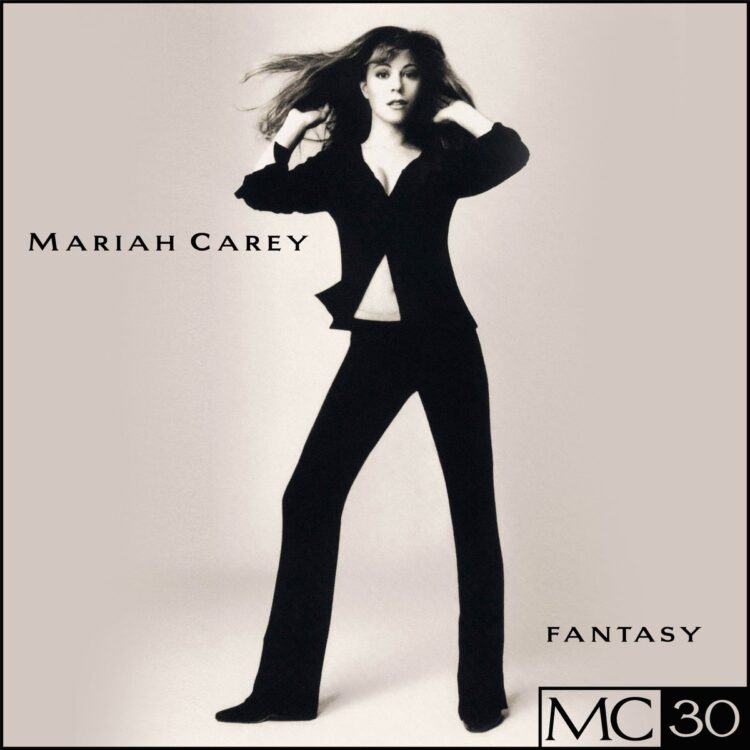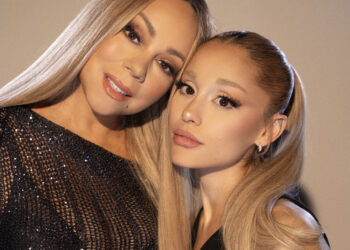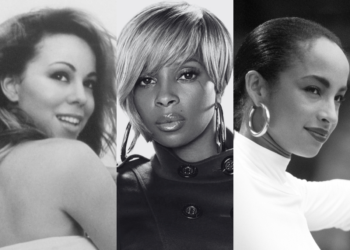For almost any iconic artist, being able to wield the brush to the canvas of your music artistry is the truest map to a long-lasting career. For songbird supreme Mariah Carey, taking the reins on her trajectory meant changing the course of music history as we knew it.
Convivial and liberating in nature, Carey’s “Fantasy” exudes a spirit of artistic freedom and calls back to a time where innovation, like intense love, came at a whim. Here, the torrid summer energy presented on Tom Tom Club’s 1981 “Genius Of Love” is leveled-up for a new decade, decorated in Carey’s breezy emphatic metaphors of vigorous passion and a fiery backbeat that got even the most obstinate listener out of their seat.
Twenty-five years after Carey unveiled “Fantasy” as the lead single to her Grammy-nominated fifth studio album Daydream, the bouncy ‘80s-esque number continues to prove it has the stamina and formulaic sampling power to exert influence over a plethora of musical acts to follow. While it further broke new ground for rap and R&B — already introduced by a hip-hop soul queen — the infallible pop-R&B formula behind “Fantasy” is all too familiar.
Despite her label, Columbia Records, pushing Carey to continue with the palette of bonafide adult contemporary and pop that catapulted her career, she paired with famed R&B producer Dave “Jam” Hall to essentially reenvision her Music Box lead single “Dreamlover” from two years earlier.
Co-produced by Hall, “Dreamlover” was a slice of heavenly chart-topping perfection, drenched in the bubbly pop that Columbia pressed so hard. But its incorporation of thunderous kick-snare-bass interplay from Big Daddy Kane’s “Ain’t No Half-Steppin” gave it the energetic facade it needed to transcend urban radio.
While this undeniable crossover success at the forefront of “Fantasy” was a career milestone for Carey, as it relates to her getting a foot in the door, she proceeded to up-the-ante on the track’s potential. With the help of Columbia Records A&R Corey Rooney, and at the initial resentment of the label, she boldly ushered in rap heavy-hitter Ol’ Dirty Bastard to feature on the “Fantasy” remix after gaining an appreciation for his appearance on SWV’s “Anything” with Wu-Tang Clan. And with Bad Boy’s Sean “Puff Daddy” Combs behind the boards, they penned what would be the birth of the massive rap-sung hit.
Combs’ remix pumps the brakes on the frothy pop-R&B influence that the original track exudes, instead opting for a heavier, more apprehended bass lick that allowed Carey and O.D.B to float on the newly-assembled revisit. Paired with harder hip-hop claps, this utopia of top 40-tinged infatuation turned dense street banger took Carey on a deeper dive into the world of hip-hop and R&B than she had previously gone before.
Along with an amended production, O.D.B.’s bristly-chanted bars flitted between the track sounds more club-ready, arriving on the brain and ready to be recited at each passing bar. The now-emblematic line “Me and Mariah / Go back like babies with pacifiers” takes on a multi-layered meaning, embracing the energy of both artists’ hometown of New York and blending with the sound it had already established.
It was a risky choice for Carey to fearlessly mix pop-R&B and hip-hop for a lead single, one that her label feared would tank her career. However, it applauds her bold intent to have full creative control over her work. In fact, it yielded successful results, as “Fantasy” debuted at number one on the Billboard Hot 100 in September 1995, making Carey the first female artist, and second overall, to do so. As well as Daydream subsequently becoming Carey’s second diamond-certified album, the elusive chanteuse’s impact on popular music reached new heights at the helm of the song’s major success.
Glorious hip-hop and R&B collaboration inevitably prevailed in mainstream, resulting in an explosive array of sugary pop-R&B songbirds and crooners recruiting hip-hop heavyweights on their fizzy, yet contemporary numbers, an act that followed suit in the “Fantasy” effect. Hip-hop and R&B innovator Ms. Lauryn Hill glided effortlessly between a rap-sung flow on her groundbreaking debut single “Doo Wop (That Thing)” in 1998, topping the Billboard Hot 100 in the process.
Fast forward to 2000, Mýa’s breezy-R&B shanty “Best Of Me” took full advantage of the mellifluous shift in the music industry, utilizing the East Coast rap stylings of Jadakiss and essentially building the song’s woozy rhythm around his equally saucy flow. Moreover, Eve’s femme-forward, rap-heavy R&B anthem “Let Me Blow Ya Mind” enlisted the alt-pop superstar, Gwen Stefani, earning the duo the inaugural Rap/Sung Collaboration award at the 44th Annual Grammy Awards in 2002. It didn’t stop there, as Brandy took to this style on “Talk About Our Love,” co-penned and featuring Kanye West.
The lofty trend of embellishing bubblegum-R&B with blazing hot rap features continued late into the decade as pop-R&B princess Rihanna rallied JAY-Z for the career-defining tune “Umbrella,” eventually picking up a Grammy win in the category of Best Rap/Sung Collaboration in 2008. R&B truly indulged in this bracing period many years after the success of “Fantasy,” as artists struck gold with their rap-infused melodies.
A quarter of a century after Carey welcomed us to her hip-hop/pop-R&B concoction, “Fantasy” remains a vital stop on the trek of contemporary music. What started as an effort to gain creative control from a rescinding label transformed into an exuberant movement bringing forth the marriage of hip-hop and R&B for a new millennium.
Listen to Mariah Carey’s newly-unveiled “Fantasy” EP below.




